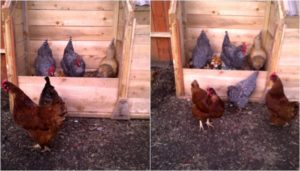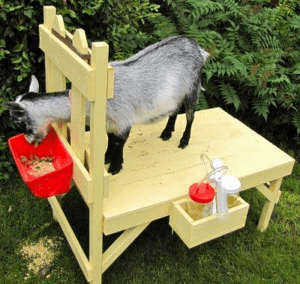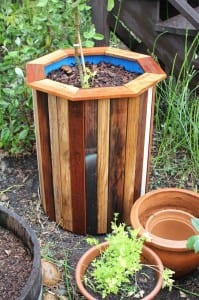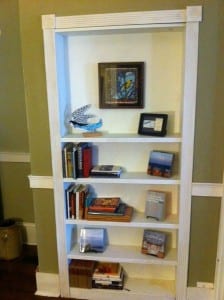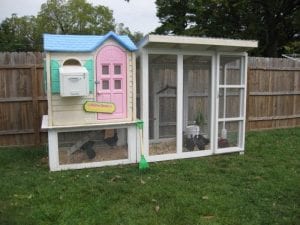Last Updated on March 13, 2024 by teamobn
Are you the kind of homeowner who’s always on the go? Then a mobile gypsy wagon is your best option. They’re very unique, affordable, and can be easily relocated whenever you wish to move. And if you’re after great savings, you can also build it yourself.
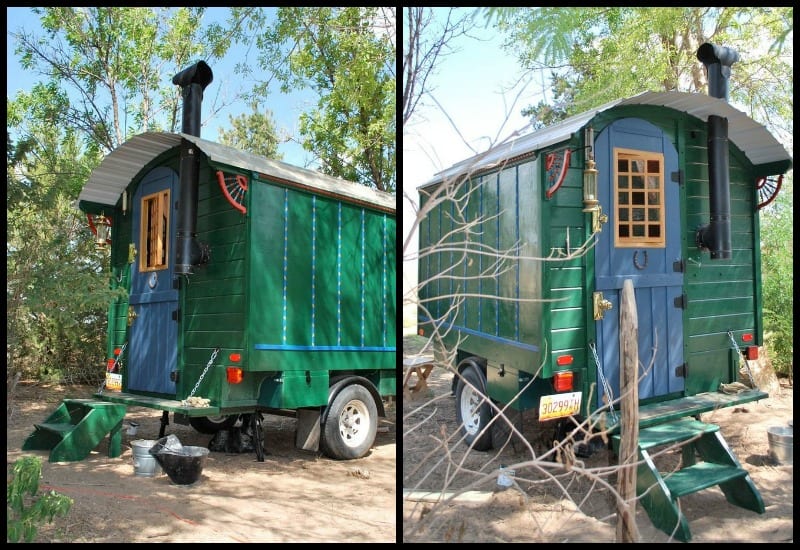
Are you the kind of homeowner who’s always on the go? Then a mobile home is your best option. They’re very unique, affordable, and can be easily relocated whenever you wish to move. And if you’re after great savings, you can also build it yourself.
Could you live in a gypsy wagon?
Contents
Building a Gypsy Wagon
Materials
- Little Cargo Trailer
- Cedar Wood
- Oak Band Boards
- Plywood
- Paint
- Hinges
- Steel Roofing
Tools
- Table Saw
- Band Saw
- Drill
- Slew
- Sander
- Tape Measure
Steps
After about fifty sketches and lots of graph paper renderings, I decided I needed to visualize this in three dimensions.
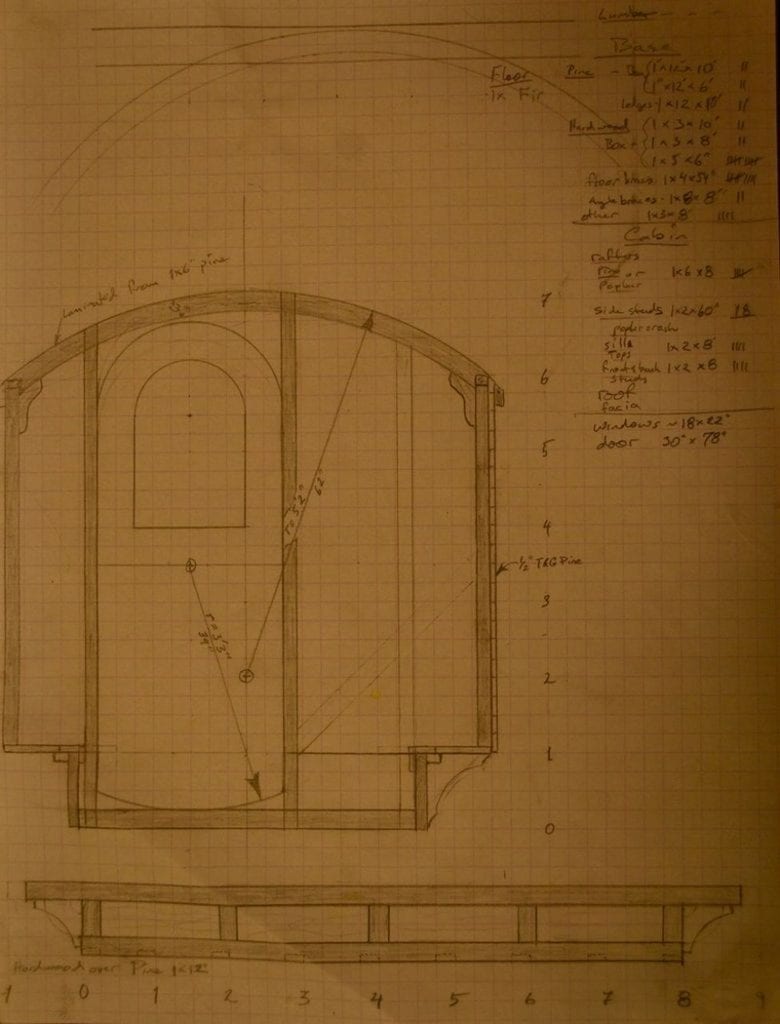
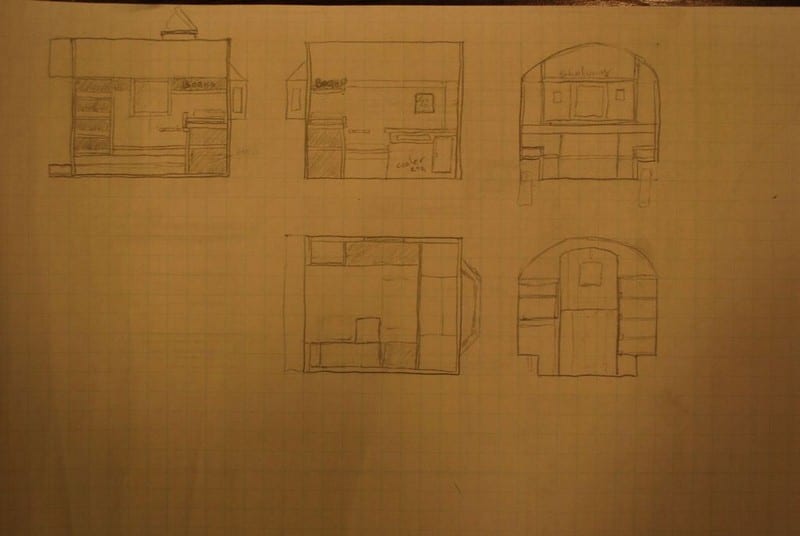
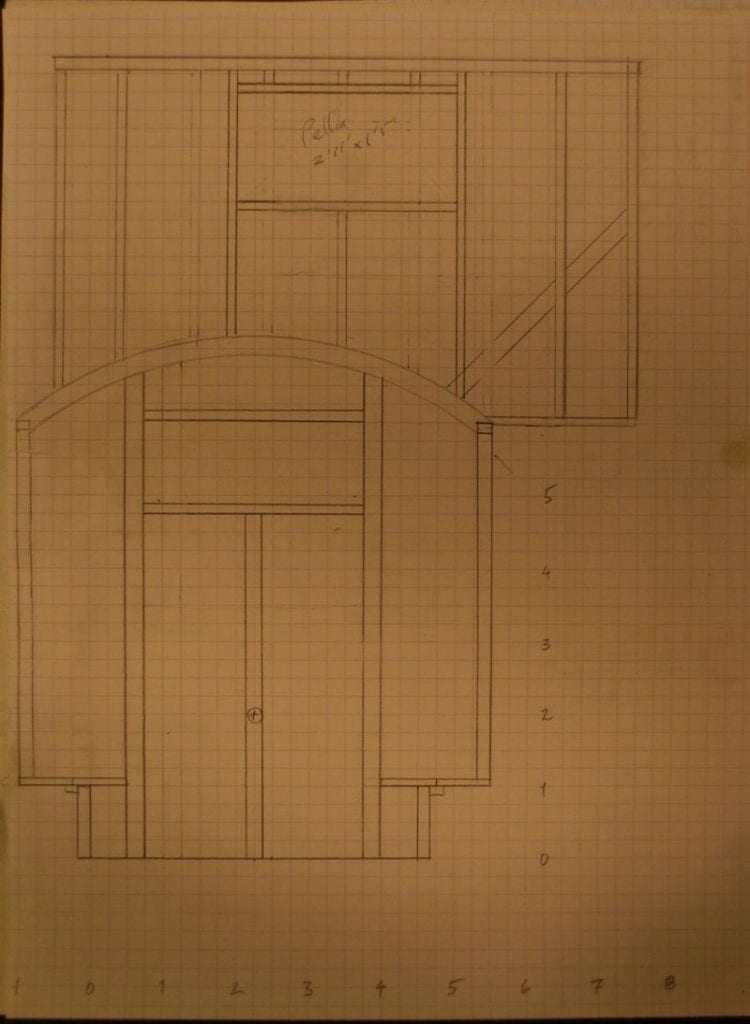
Here is my cardboard mock-up of the final gypsy wagon design.
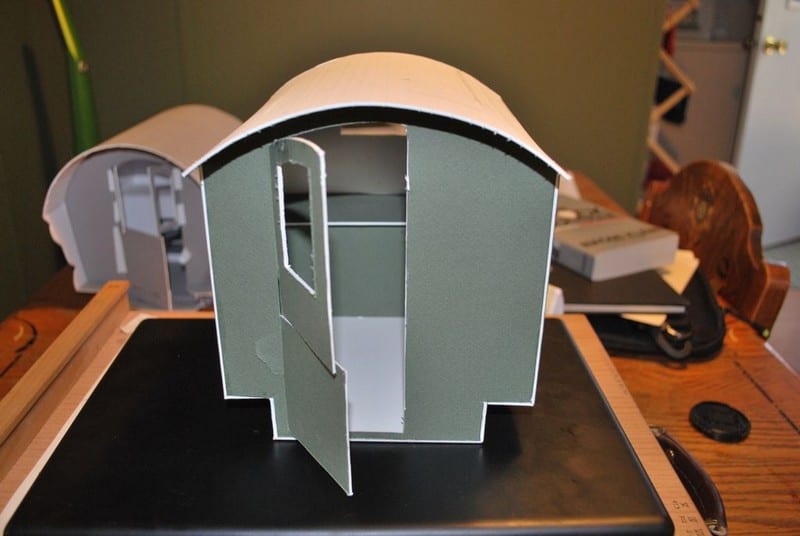
I found a sturdy little cargo trailer with a heavy duty frame and tongue for my gypsy wagon. The first step was to cut off the box with a reciprocating saw and grinder. I intended to save the wiring harness and lights but they proved to be outdated and fairly ratty.
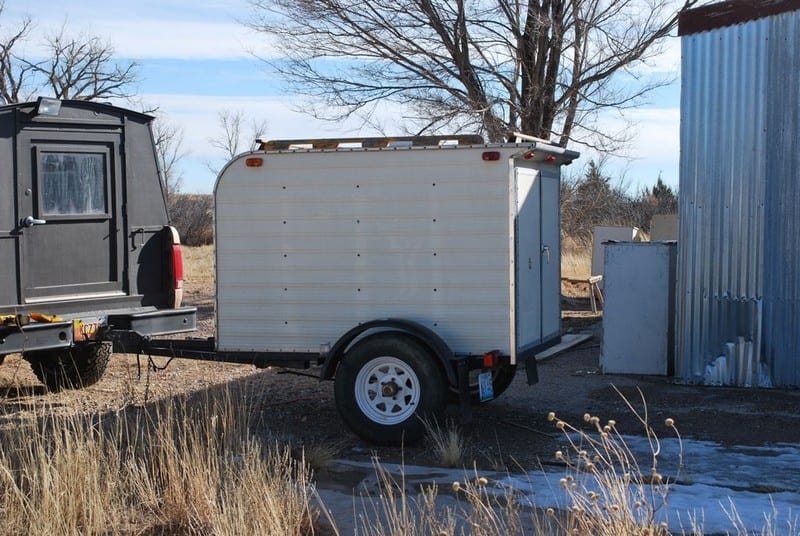
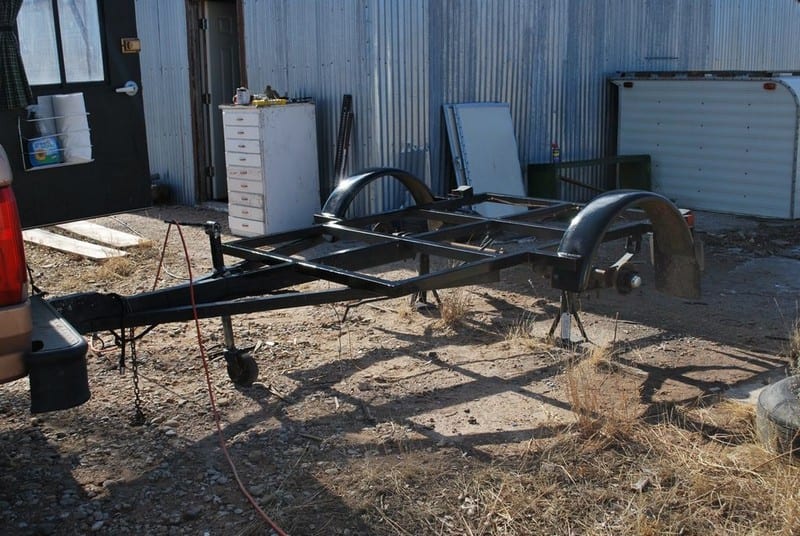
There was a huge sense of relief when I made the first cuts to create the brackets of my gypsy wagon. After years of pondering, waiting, and changing plans, I felt committed. It was like I was starting an avalanche. No turning back now. I plunged into long evenings and weekends, cutting, fitting, and sawing. The base came together quickly after work one evening.


Finally, the base for my gypsy wagon was set on the newly painted frame and through-bolted for strength and safety.
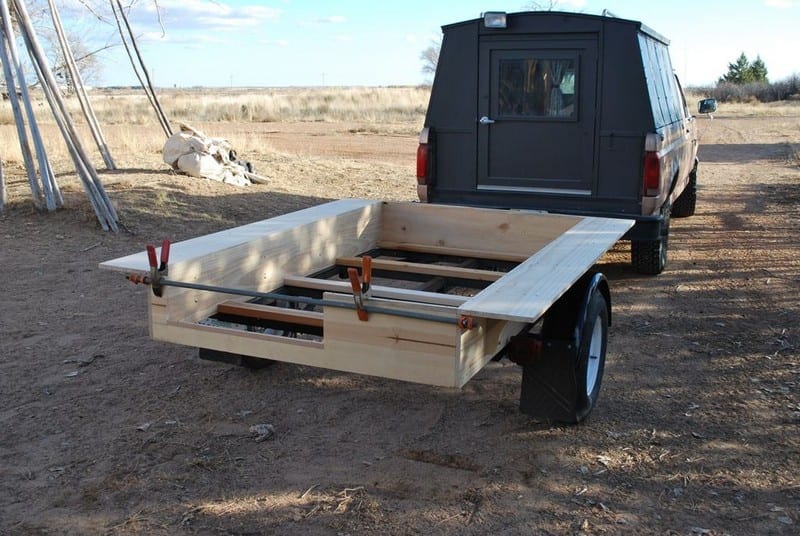
The walls of my gypsy wagon are built like a box, not like modern stick framing. All are tongue and groove pine, the front and rear being 3/4″ thick, the sides 1/4″. This is why the sides have hardwood strengthening battens (1″) run vertically inside and out on 1′ centers. Corner posts are made from 1 1/4″ pine stock. Outside corners are oak. Upright bracing around the door inside and out from poplar. Upright bracing on front wall is oak. Sub-floor is 1″ salvaged plywood.
Footnote: I have since put a second layer of wood over the outside side-walls. This added some strength (and at least 40 pounds) but was primarily to add insulation for heat transfer. The walls get incredibly hot in the southwestern sun and transferred much of the heat inside. I didn’t really notice a problem in the cold as the wagon is quite snug.
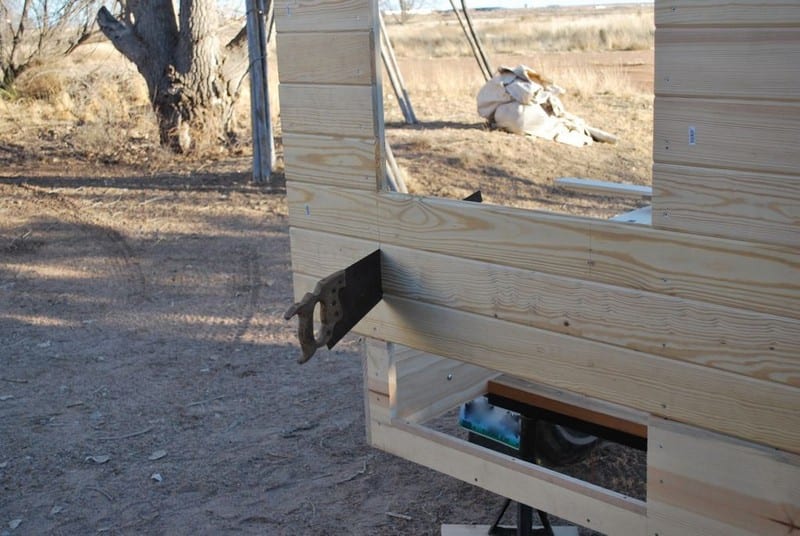


The bed structure of my gypsy wagon ties the walls together and stiffens the entire structure. Without this, I would have to find some other way to strengthen the walls. The roof is plywood, screwed to poplar purlins. Outer and inner tops of walls are stiffened with oak band boards.

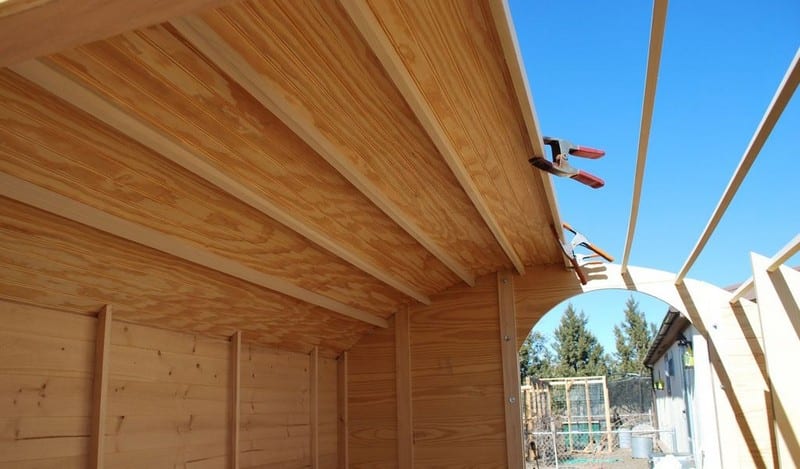

The table of my gypsy wagon is modeled after those in old British wagons. The window was made as a separate unit and then attached whole to the wagon body. It is oak and pine. The door is modeled after some sheep wagon styles from the western U.S. It is a “Dutch door” with a functional casement window and a wash pan holder. Not quite finished in the photo below but nearly there.




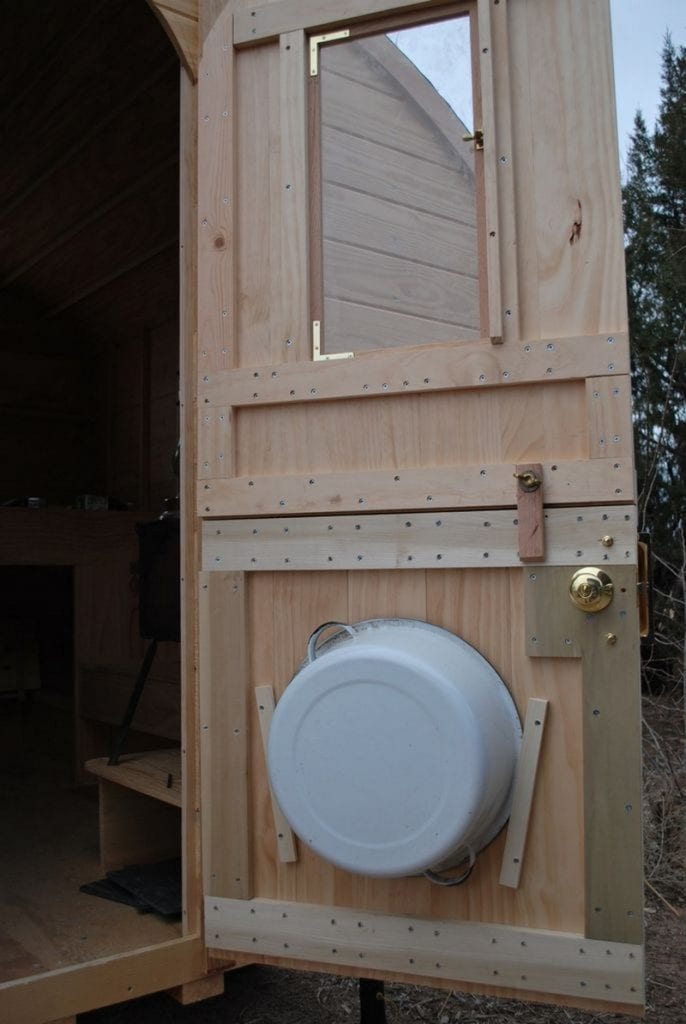
We took our gypsy wagon on a 500 mile journey into the desert to test her out and figure out some interior layout issues. We got a base coat of oil paint on most of the body by the end of the week. After we returned, we added an oak floor, finished the table, and added a lot of homey touches. There ample storage under the beds, but I intend to add more outside.
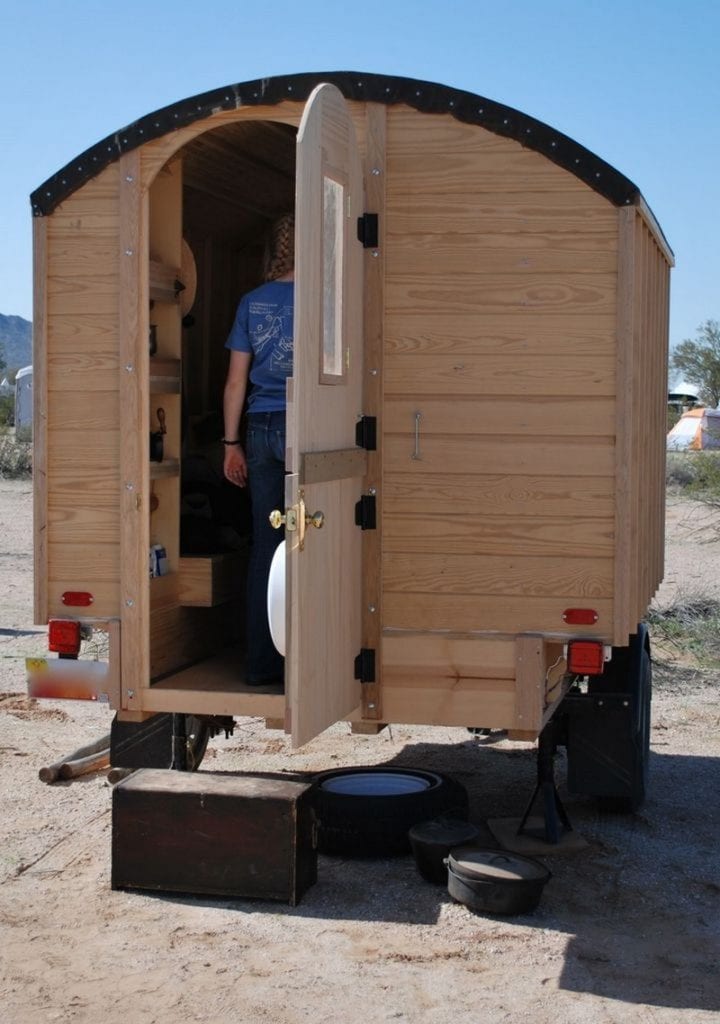
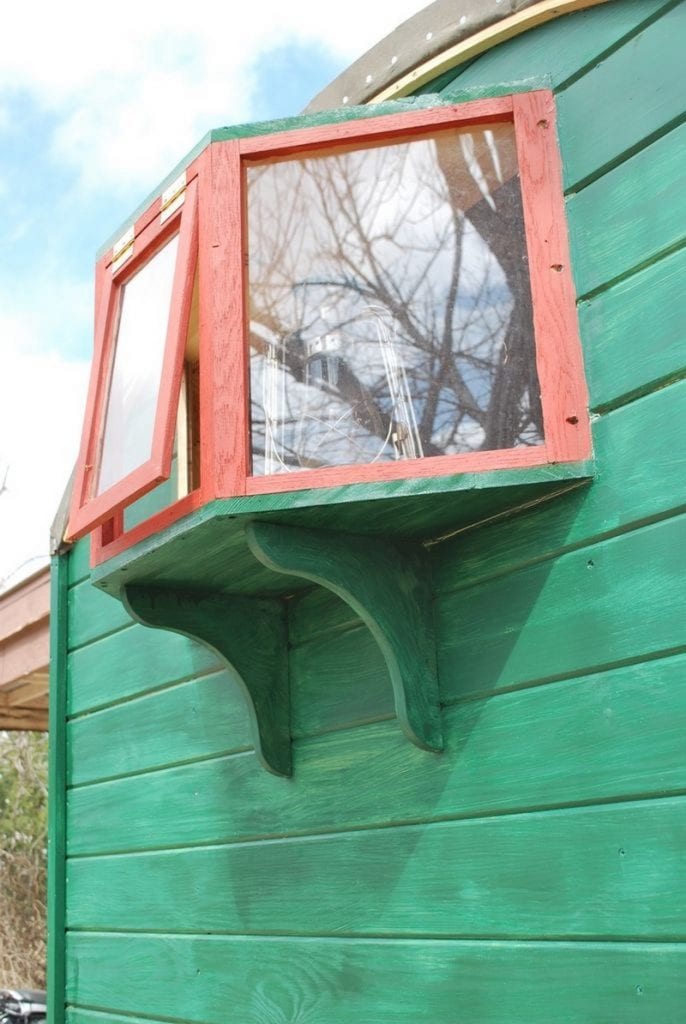

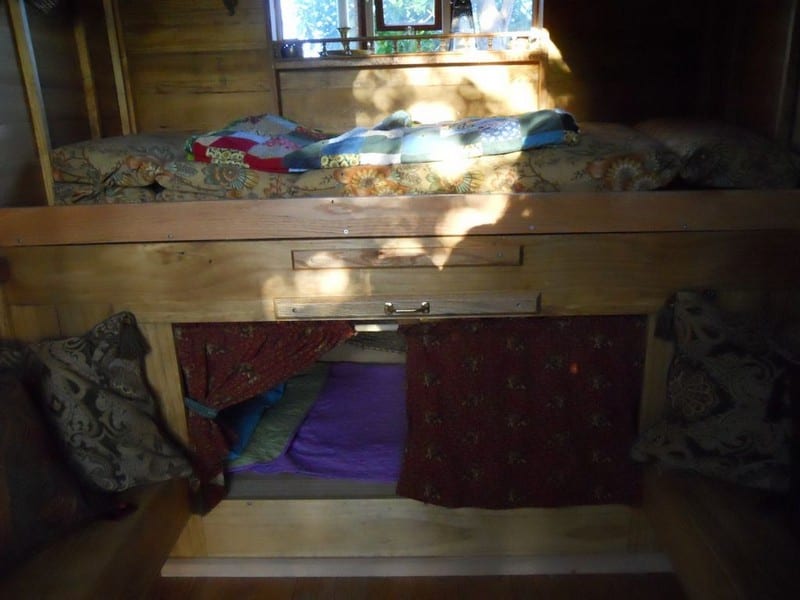
Stairs were built to match wagon. Oak treads, fir risers. The paint was still proceeding slowly at this point but we had to take some time off to head to the ocean for a second “test” journey. The wagon traveled across New Mexico, Arizona, and southern California through the scorching desert to the beautiful San Diego area for a week. When we got back, she got her full coat of paint, and some more interior work. The shelves are an enormous amount of space, and can be covered by a roman shade type cover.
Roof: Although I didn’t photograph this step, the roof was ultimately covered in a low profile steel that was epoxy coated in the factory. It is a light color to keep some of the radiant heat out and seems to work well. It is screwed through the roof into the purlins.

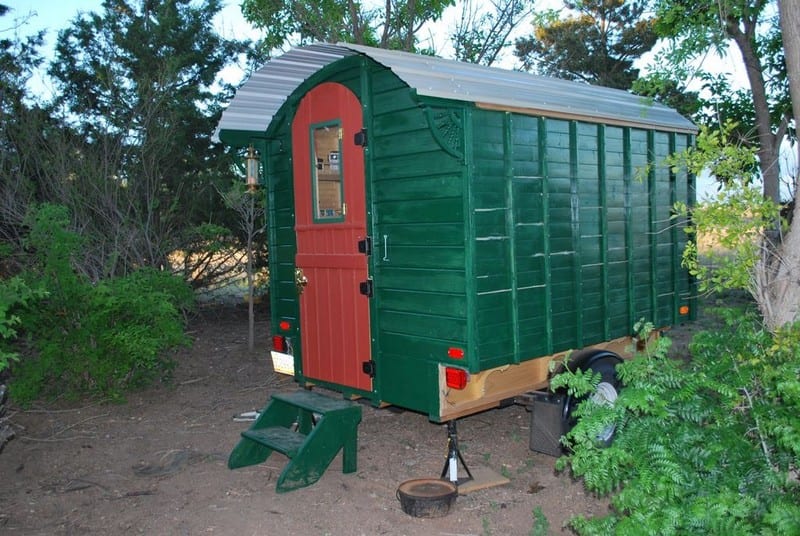


With autumn here I felt it was time to deal with the dreaded stove. I made a hearth area in the corner, tiled the riser with slate, covered the walls with 14 gauge flashing, covered that with fire shield board, inserted a wall thimble, and placed the pipe and stove in the wagon. In case of rough driving conditions, the stove is screwed to the deck, and two large eye screws attach it to the back wall. It is unlikely to move in anything short of a rollover.
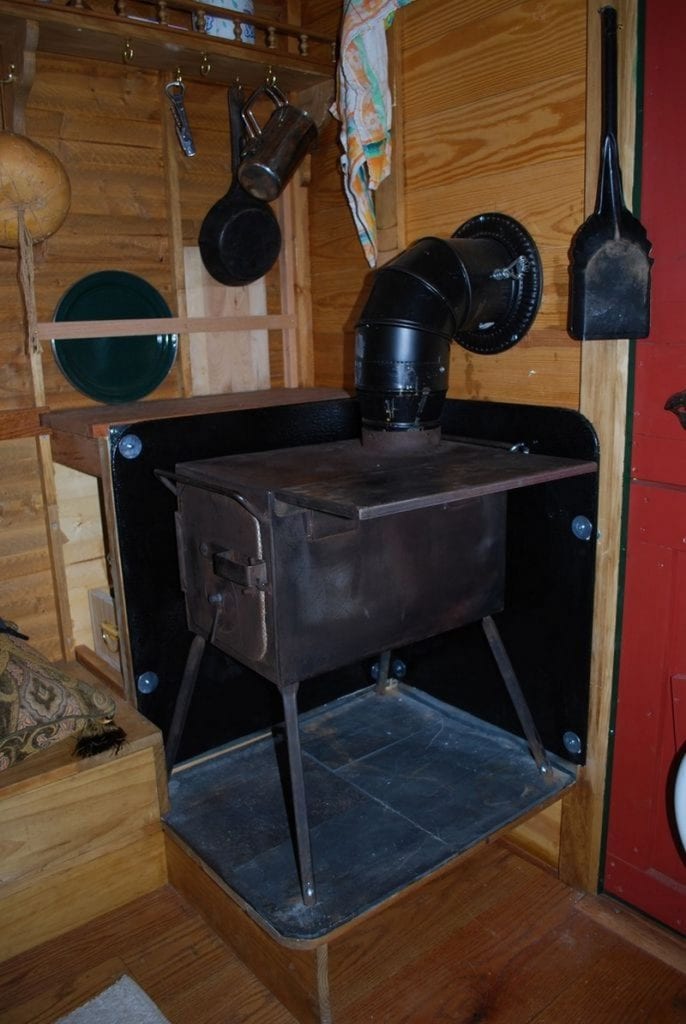
Only with time will the wagon really take on a personality as it get lived in and things are arranged “just so”. Like a ship or any small living space, a good deal of thought needs to go into every little detail, especially when it comes to storage. I think it will help me minimize and is now my real “escape pod”, whether its to get to the mountains or beach, or to just someday hit the road.
Thanks to paleotool for this great project!
Legal Considerations and Mobility
Embarking on the journey of building and living in a gypsy wagon is an adventure that combines the allure of a nomadic lifestyle with the satisfaction of creating a unique, mobile home. While the prospect of crafting your own gypsy wagon and exploring new horizons is exciting, it’s essential to navigate the legal landscape to ensure your venture is both enjoyable and compliant.
This section delves into the key legal considerations and mobility aspects you must address when bringing your gypsy wagon dream to life.
Legal Considerations
- Zoning Laws and Building Codes: Gypsy wagons, while mobile, can sometimes fall into a grey area between vehicles and permanent dwellings. Before starting your build, research local zoning laws and building codes in your area. Some regions may have specific requirements or restrictions on living in mobile structures or parking them on private property. Understanding these laws can help you design your gypsy wagon to comply with regulations and avoid potential legal issues.
- Registration and Road Legality: As a mobile home, your gypsy wagon must be road-legal if you plan to tow it on public roads. This involves registering the wagon as a recreational vehicle (RV) or a trailer, depending on your local Department of Motor Vehicles (DMV) guidelines. You’ll likely need to ensure that your gypsy wagon meets safety standards, including proper lighting, braking systems, and size dimensions.
- Insurance: Securing insurance for a gypsy wagon can be more complex than for a standard vehicle or home. You may need to look into specialized insurance providers that cater to RVs, tiny homes, or custom-built trailers. Insurance will protect you against road accidents, theft, and damages, offering peace of mind as you travel.
- Permits for Construction: Depending on where you plan to build your gypsy wagon, you may need to obtain specific permits, especially if your build is considered a permanent structure at any point during construction. Check with local authorities to understand the requirements for permits, inspections, and any other regulations that may apply to the construction phase of your gypsy wagon project.
- Utility Connections and Off-Grid Living: If your gypsy wagon design includes connecting to public utilities or adopting off-grid solutions, you must adhere to legal standards and regulations. For off-grid living, investigate the legality of collecting rainwater, installing solar panels, and composting toilets in your intended locales. Each state or municipality may have its rules governing these practices.
- Historical and Environmental Preservation: There may be additional restrictions to consider in areas with strict environmental or historical preservation laws. These could involve limitations on where you can park your gypsy wagon or specific guidelines on waste disposal and ecosystem impact. Always research the environmental and historical guidelines of your intended destinations to ensure compliance.
Mobility
- Towing Vehicle Requirements: The ability to move your gypsy wagon easily depends on having a suitable towing vehicle. Ensure your vehicle is capable of handling the weight and dimensions of your wagon. Consider the wagon’s gross vehicle weight rating (GVWR) and the towing capacity of your vehicle to ensure safe and efficient travel.
- Route Planning: When you’re ready to hit the road, planning your route is crucial. Some roads may have restrictions on trailer sizes or weight limits. Additionally, consider the terrain and weather conditions, as some areas might be challenging or unsafe for towing a gypsy wagon. Using GPS and road-trip planning apps that cater to RVs can help you find the best routes and campsites.
- Parking and Campsites: Finding places to park or camp with your gypsy wagon requires some research. Not all campsites are equipped to accommodate non-traditional RVs or tiny homes on wheels. Look for RV parks, campgrounds, and tiny home communities that welcome gypsy wagons. Always check local regulations regarding overnight parking, especially in urban areas or public lands.
- International Travel: For those considering taking their gypsy wagon on international adventures, it’s crucial to research the import and export laws, as well as the vehicle and trailer regulations of the countries you plan to visit. Customs documentation, vehicle insurance that covers international travel, and knowledge of local driving laws are all essential for a hassle-free journey.
- Seasonal Mobility: The mobility of your gypsy wagon can also be influenced by seasonal changes. Winter conditions may require winterized water systems, insulated pipes, and appropriate tires for your wagon and towing vehicle. Conversely, extreme heat demands proper ventilation, air conditioning, and sun protection for your gypsy wagon to ensure it remains a comfortable living space.
- Community and Legal Advocacy: Joining a community of gypsy wagon, tiny home, or RV enthusiasts can provide valuable insights and support. These communities often share updates on legal changes, advocacy opportunities, and tips for navigating the complexities of mobile living. Engaging in advocacy efforts to change restrictive laws or regulations can also enhance the living experience for the gypsy wagon community.
Navigating the legalities and mobility challenges is a critical step in the journey of owning a gypsy wagon. By addressing these considerations, you can ensure that your adventure on the road is both lawful and enjoyable. With proper planning and compliance, your gypsy wagon can offer a lifetime of memories and discoveries.
Interior Design and Optimization
Creating a comfortable, functional, and visually appealing interior in a gypsy wagon requires thoughtful design and optimization. Given the limited space, every inch counts, making it essential to employ strategies that maximize usability while reflecting the unique charm of gypsy wagon living.
This section will guide you through optimizing your gypsy wagon’s interior design, ensuring it becomes a cozy, efficient, and personalized space.
Space-Saving Solutions
- Multi-functional Furniture: Invest in or custom-build furniture that serves multiple purposes. For instance, a bed that transforms into a dining area or storage benches can significantly enhance the usability of your gypsy wagon’s interior. Look for pieces that fold, collapse, or slide away when not in use.
- Vertical Storage: Utilize the vertical space in your gypsy wagon by installing shelves, hanging nets, and hooks. This approach helps keep the floor area clear and organizes items efficiently. Consider wall-mounted fold-down tables or desks that provide work or eating space only when needed.
- Built-in Storage: Design built-in storage solutions wherever possible. Underfloor compartments, overhead cabinets, and hidden nooks can store a surprising amount of belongings without encroaching on living space. Tailor these solutions to the specific needs and layout of your gypsy wagon.
- Vertical Storage Innovations: Utilize every inch of vertical space in your gypsy wagon for storage. Install ceiling-mounted shelves for lightweight items and use wall-mounted magnetic strips in the kitchen area to hold knives and utensils. Fold-down desks and tables that tuck away when not in use can transform a living space into a workspace seamlessly.
- Convertible Furniture: Invest in or custom-build furniture that serves dual purposes. A bed that converts into a sofa or a dining area during the day saves space and adds versatility to the living area. Consider built-in seating that doubles as storage or a pull-out pantry hidden within a staircase to maximize functionality.
- Retractable Solutions for Comfort: Incorporate retractable elements such as a drop-down movie screen, which can be hidden when not in use, or a retractable awning outside the wagon to extend living space outdoors. These solutions provide the comforts of home without permanently occupying precious space inside the gypsy wagon.
Aesthetic Choices
- Color Scheme: Selecting the right color palette can make your gypsy wagon’s interior feel larger and more inviting. Light, neutral colors help reflect light and expand the perception of space. Accents in brighter colors or patterns can add depth and personality without overwhelming the senses.
- Textiles and Decor: Use textiles like curtains, cushions, and rugs to add warmth and texture to your gypsy wagon. These elements can also serve practical purposes, such as insulation or privacy. Choose decor that reflects the nomadic spirit of gypsy wagon living, incorporating meaningful and functional items.
- Lighting: Good lighting is crucial in small spaces. Opt for a combination of natural light, LED strips, and task lighting to create a bright and airy feel. Skylights or solar tubes can enhance natural light during the day, while strategically placed lamps or LED lights provide ambiance and functionality at night.
- Theme and Color Scheme: Choosing a cohesive theme and color scheme can greatly influence the perception of space and comfort within your gypsy wagon. Light colors make the interior feel larger and more open, while a consistent theme, such as bohemian, rustic, or modern minimalist, can unify the space and reflect personal style.
- Multipurpose Decor: Opt for decor that is both functional and aesthetically pleasing. Decorative baskets and boxes can serve as storage, while strategically placed mirrors can make the space appear larger and more open. Use fabrics and textiles to add warmth and texture without taking up too much space.
- Custom Art and Craftsmanship: Embrace the artistic heritage of traditional gypsy wagons by incorporating custom art and craftsmanship. Hand-painted details, custom woodwork, and artisanal fabrics can add character and beauty to your wagon, making it a true reflection of your personality and artistic vision.
Maximizing Usability
- Custom Layouts: Design the interior layout of your gypsy wagon based on your lifestyle and needs. Consider the flow of movement and the placement of key elements like the kitchen, sleeping area, and storage. A well-thought-out layout ensures that the space meets your daily requirements efficiently.
- Flexible Living Areas: Incorporate elements that can change as your needs do. For example, a movable partition can separate the sleeping area for privacy or be removed to open up the space. Think about how the interior can be reconfigured for entertaining, working, or relaxing.
- Innovative Solutions for Comfort: Don’t overlook the importance of insulation, ventilation, and heating in your gypsy wagon. These elements contribute significantly to the comfort and livability of the space. Research innovative materials and solutions that provide these benefits without taking up too much room.
Designing the interior of a gypsy wagon is an opportunity to create a unique and personalized living space that marries functionality with the enchanting aesthetic of nomadic living. By employing space-saving solutions, making thoughtful aesthetic choices, and maximizing usability, your gypsy wagon can become a testament to efficient and stylish tiny home living.
Conclusion
Building a gypsy wagon represents a journey into both creativity and practicality, marrying the allure of a nomadic lifestyle with the satisfaction of crafting a personalized living space. It challenges builders to think innovatively about space, design, and mobility, ensuring every inch of the wagon is optimized for both comfort and function. Ultimately, the process of constructing a gypsy wagon offers a unique opportunity to create a home that is not just a place to live, but a testament to the builder’s skills, aesthetics, and dreams.
A great addition to your gypsy wagon is a portable station. Read our post on the best power stations!


